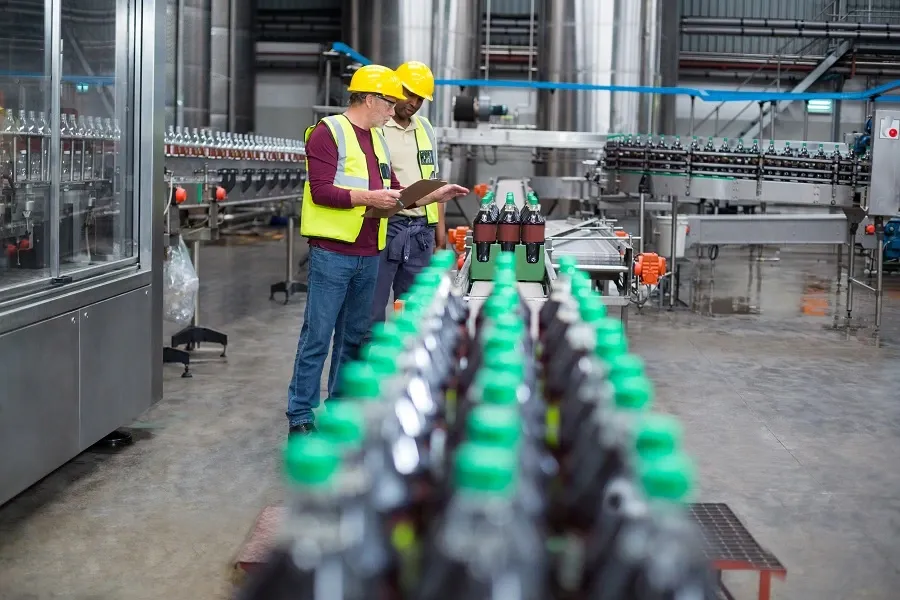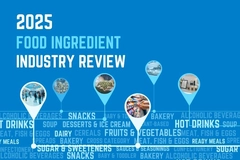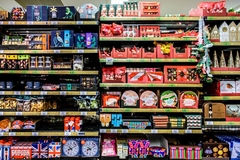
- Industry news
Industry news
- Category news
Category news
- Reports
- Key trends
- Multimedia
- Journal
- Events
- Suppliers
- Home
- Industry news
Industry news
- Category news
Category news
- Reports
- Key trends
- Multimedia
- Events
- Suppliers
Food safety: Overcoming climate shocks, recalls & regulatory gaps to boost resilience
Key takeaways
- Food safety challenges are intensifying, creating “process gaps” in enforcement and consistency despite existing scientific knowledge.
- Rising recalls linked to pathogens, contaminants, and allergens stem from mislabeling, miscommunication, and weak documentation.
- Digital tools, AI, and interconnected data systems are seen as critical to closing gaps, enabling real-time traceability and enhanced transparency.

The F&B sector must navigate a complicated food safety landscape. Climate change, geopolitical pressures, and fluctuating trade policies pressurize global supply chains, pushing companies to explore how they can strengthen their supply chain resilience while ensuring safe food reaches dinner tables.
For regulators, resource constraints are a concern, while consumers continue to demand transparency amid an increased desire to know about their food’s farm-to-table journey.
According to a Global Standards 1 US consumer survey conducted in 2024, 77% of consumers believe that product information is essential when making a purchase, and 79% of shoppers are more likely to purchase products with a scannable barcode/QR code (via smartphone) that provides the information they want.

Meanwhile, recalls linked to pathogens, contaminants, and allergens are rising despite scientific advancements — revealing not a knowledge gap but a “process gap” across the industry.
Food Ingredients First speaks with Kari Barnes, head of Regulatory at TraceGains, to discuss these challenges and explore how technology, regulation, and transparency can reshape food safety in the coming years.
The Colorado, US-based company provides compliance, quality, and innovation solutions for the F&B industry and recently expanded to 100,000 supplier locations worldwide.
“Food safety today is more complex than ever in history. Global supply chains stretch across borders impacted by climate change, geopolitical tensions, and shifting trade policies, each adding layers of volatility and risk,” says Barnes.
 Using tech to enable transparency, earn trust, and build resilience is important, says Barnes.“Extreme weather events affect crop yields and increase the likelihood of contaminants, while political conflicts and trade disputes disrupt ingredient sourcing and create blind spots in oversight.”
Using tech to enable transparency, earn trust, and build resilience is important, says Barnes.“Extreme weather events affect crop yields and increase the likelihood of contaminants, while political conflicts and trade disputes disrupt ingredient sourcing and create blind spots in oversight.”
Recent FDA layoffs of experts who review food ingredients’ safety spark concerns over regulatory capacity at a time when consumer demands for safety and transparency are at an all-time high.
Barnes notes that this era is different not due to a lack of scientific knowledge but the amount of external forces colliding with day-to-day operations. “Companies must now manage food safety in a world where risk is no longer linear but multidimensional and constant.”
Food recalls and the “process gap”
Foodborne illnesses linked to Salmonella, Listeria, and E. coli and allergen-related recalls are on the rise, revealing “cracks” in the food system — particularly around consistency and visibility, Barnes tells us.
Outbreaks remain because supply chains are more “global and complex, and preventive measures are not applied evenly across every tier,” despite the existence of pathogen control measures.
Meanwhile, in allergen-related recalls, mislabeling, miscommunication, and documentation gaps are often the cause, not the science.
Food safety today is less about knowing “what to do” and more about the presence of systems that can enforce it reliably, share data seamlessly, and catch risks before they escalate, Barnes explains.
“The industry doesn’t have a knowledge gap; it has a process gap. The FDA’s delayed implementation of the FSMA 204 rule (Food Safety Modernization Act), aimed at enhancing traceability across the supply chain, underscores this.”
 Food recalls are often caused by mislabeling, miscommunication, and documentation gaps.The act does not indicate the need for new science, but for infrastructure, recordkeeping, and interoperability to implement “what we already know.” Its delay further highlights the urgency of the industry needing systems that close this enforcement and visibility gap.
Food recalls are often caused by mislabeling, miscommunication, and documentation gaps.The act does not indicate the need for new science, but for infrastructure, recordkeeping, and interoperability to implement “what we already know.” Its delay further highlights the urgency of the industry needing systems that close this enforcement and visibility gap.
Data and regulatory challenges
F&B manufacturers face a multitude of challenges in ensuring food safety in their businesses.
“The most common problem I hear about is data; how hard it is to collect, standardize, and share information across a network of suppliers. Companies are drowning in documents, whether certificates of analysis, audit results, or supplier questionnaires; much is still exchanged manually,” says Barnes.
Another hurdle is adapting to changing regulations. “Regulations evolve quickly, and companies struggle to update specifications and reformulations at the speed needed to stay compliant. It’s not that companies don’t prioritize food safety; the systems in place often make the job harder than it should be.”
Leveraging technology and digitalization
Barnes describes technology as the “missing ingredient” that could close the process gap.
“Digital compliance and networked ecosystems are now filling that void, allowing companies to see across their entire supply chain rather than react to it in pieces. There’s understandable skepticism around AI; it’s new territory for a traditionally cautious industry.”
He adds that companies are already using AI to streamline compliance, speed up risk identification, and keep pace with constantly changing regulations.
 Nearly 77% of US consumers seek detailed product information while shopping, says a GS1 survey.“What’s striking is that once safety stops dragging on resources and becomes a source of insight, it directly fuels growth. Smarter systems don’t just protect F&B brands; they give them the speed and foresight to move faster, outpace disruption, and stay ahead of the competition.”
Nearly 77% of US consumers seek detailed product information while shopping, says a GS1 survey.“What’s striking is that once safety stops dragging on resources and becomes a source of insight, it directly fuels growth. Smarter systems don’t just protect F&B brands; they give them the speed and foresight to move faster, outpace disruption, and stay ahead of the competition.”
Prioritizing transparency
Beyond prevention, the F&B industry needs to pivot its mindset to truly transform food safety in the decade ahead.
A shift in focus from a “compliance-first mindset to a transparency-first mindset” is important, according to Barnes.
“Compliance is the floor, not the ceiling. Culturally, that means embracing openness with consumers and collaboration with suppliers. Technologically, it means building interconnected data systems that eliminate silos and make safety insights actionable across the entire supply chain.”
From a regulatory standpoint, Barnes expects to see a greater emphasis on “digital proof,” such as batch-level traceability and instant access to documentation, than static audits.
“The boldest change we can make as an industry is to start using tech to enable transparency, transparency to earn trust, and trust to build resilience. That shift in perspective will define the next decade.”









